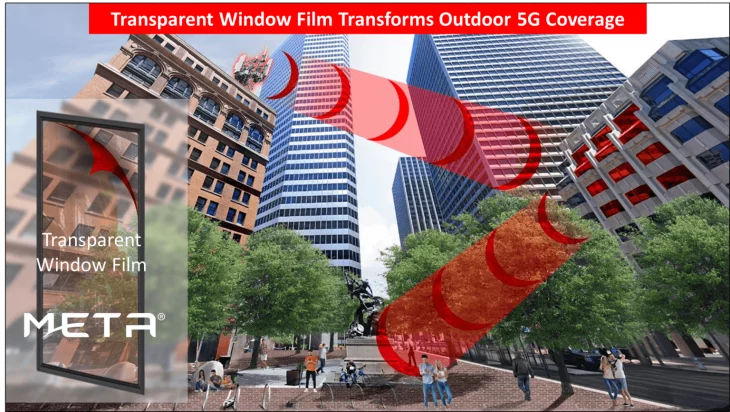
By John Bugailiskis
LAS VEGAS – Today’s 5G networks, particularly those running in the high-band spectrum, are specifically designed to work outside. Once 5G subscribers move inside they lose the signal.
Since it is widely estimated more than 80% of all mobile data is consumed indoors, the ultimate success of rolling out 5G everywhere will hinge on overcoming this limitation.
Currently for any indoor 5G network in mmWave spectrum to operate in a building, providers are limited to installing numerous expensive metal antennas to ensure consistent signal coverage. Fortunately, there is a promising alternative.
Meta Materials, a smart materials and photonics manufacturer, is currently demonstrating its advanced Nanoweb 5G reflector technology at CES 2022. The Dartmouth, Nova Scotia-based company’s ultra-thin and transparent reflector can be attached anywhere, including surfaces not suitable for traditional metal reflectors such as windows. The material also requires no connection to a power supply to maximize 5G signal strength in buildings.
Market research firm Lux Research forecasts the market for metamaterial devices such as those developed by Meta Materials will grow to $10.7 billion by 2030. Metamaterials can also be used in autonomous vehicles, telecommunications antenna, 6G networks, coatings, vibration damping, wireless charging, noise prevention and more.
“Our first 300mm web width, roll-to-roll Nanoweb pilot production line, featuring Meta’s proprietary RML (rolling mask lithography) technology, should be operational in January 2022 at our recently upgraded facility in Pleasanton, California and we are already organizing demonstrations and customer visits for Q1 2022,” said Meta president and CEO George Palikaras.
“We look forward to supplying higher volumes and web-widths to support market development for 5G communications and a wide range of other applications in automotive, aerospace, and consumer electronics.”
Meta claims its 5G reflector will provide a more sustainable and cost-effective solution compared to installing additional powered base stations and repeater infrastructure.
The live video demonstration at CES 2022 shows how the Nanoweb reflector matches the signal strength of a solid metal plate, with a return signal measuring -37dB.
A second demonstration shows what occurs in situations where the angle of the incoming signal does not align well with the desired receiving location. The signal reflected from the metal plate in an off angle is almost completely lost, measuring -51dB (0.01%). A specialized Nanoweb reflector provides a design-specific reflection angle to optimize signal propagation, measuring a -37% dB signal, despite the anomalous angle.
Meta’s 5G reflector technology has been independently tested in collaboration with Sekisui Chemical in Japan, demonstrating the ability to effectively manage 5G signals within buildings. Sekisui plans to start sample sales in 2022 and aims for sales of $65 million by 2026.




